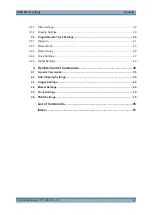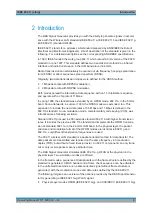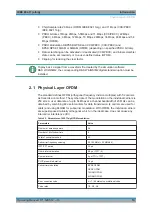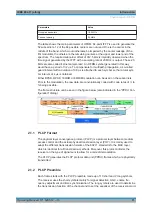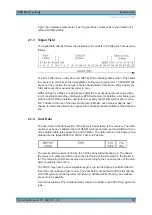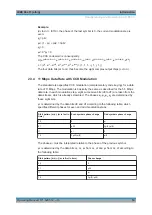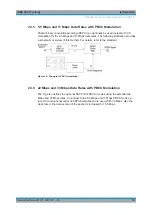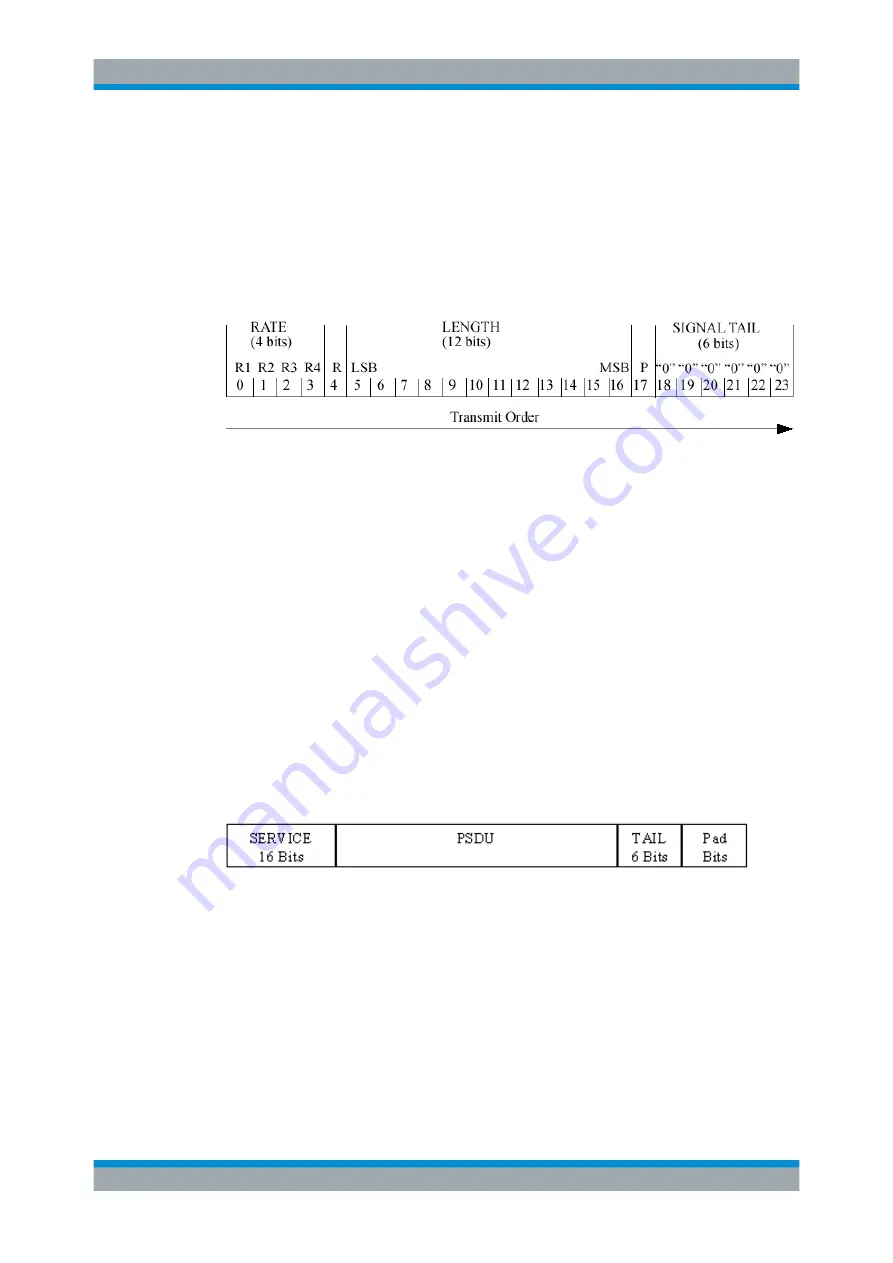
Introduction
IEEE 802.11 (a/b/g)
12
Operating Manual 1171.5283.12 ─ 18
ingly. The complete preamble is 16 µs long and thus corresponds to the duration of 4
normal OFDM symbols.
2.1.3
Signal Field
The signal field directly follows the preamble and consists of 24 bits which are used as
follows:
The first 4 bits inform on the data rate (RATE) of the following data section. This allows
the receiver to correctly set its demodulator. Following a reserved bit, 12 LENGTH bits
are sent. They contain the number of bytes transmitted in this frame. After a parity bit,
6 tail bits reset the convolutional coder to zero.
With settings for 6 Mbps, the 24 bits are subjected to usual signal processing consist-
ing of convolutional coding, interleaving, BPSK subcarrier modulation, pilot carrier gen-
eration and OFDM modulation and thus form exactly one OFDM symbol of 4 µs dura-
tion. Thanks to the use of the lowest data rate (6 Mbps), each receiver has the best
chance to obtain the information required for subsequent demodulation of the data sec-
tion.
2.1.4
User Data
The user data in the data section of the frame is finally taken to the receiver. The data
section may have a variable length of OFDM symbols and can be transmitted with one
of the defined data rates between 6 and 54 Mbps. The data section of the frame is sub-
divided into the fields SERVICE, PSDU, TAIL and Pad bits.
The service field consists of 16 bits, the 7 LSBs transmitted first being 0. The allows
the receiver to draw conclusions as to the start value of the scrambler in the transmit-
ter. The remaining 9 bits are reserved and, according to the current version of the stan-
dard, should also be set to 0.
The PSDU may have a user-selectable length of up to 2346 bytes. 6 tail bits follow to
reset the convolutional coder to zero. The data field must be filled with the full number
of OFDM symbols and is therefore rounded up. Additional bits that may be available
are set to 0 as pad bits.
A short description of the individual steps required to attain a valid 802.11a/g signal fol-
lows.
Physical Layer OFDM




